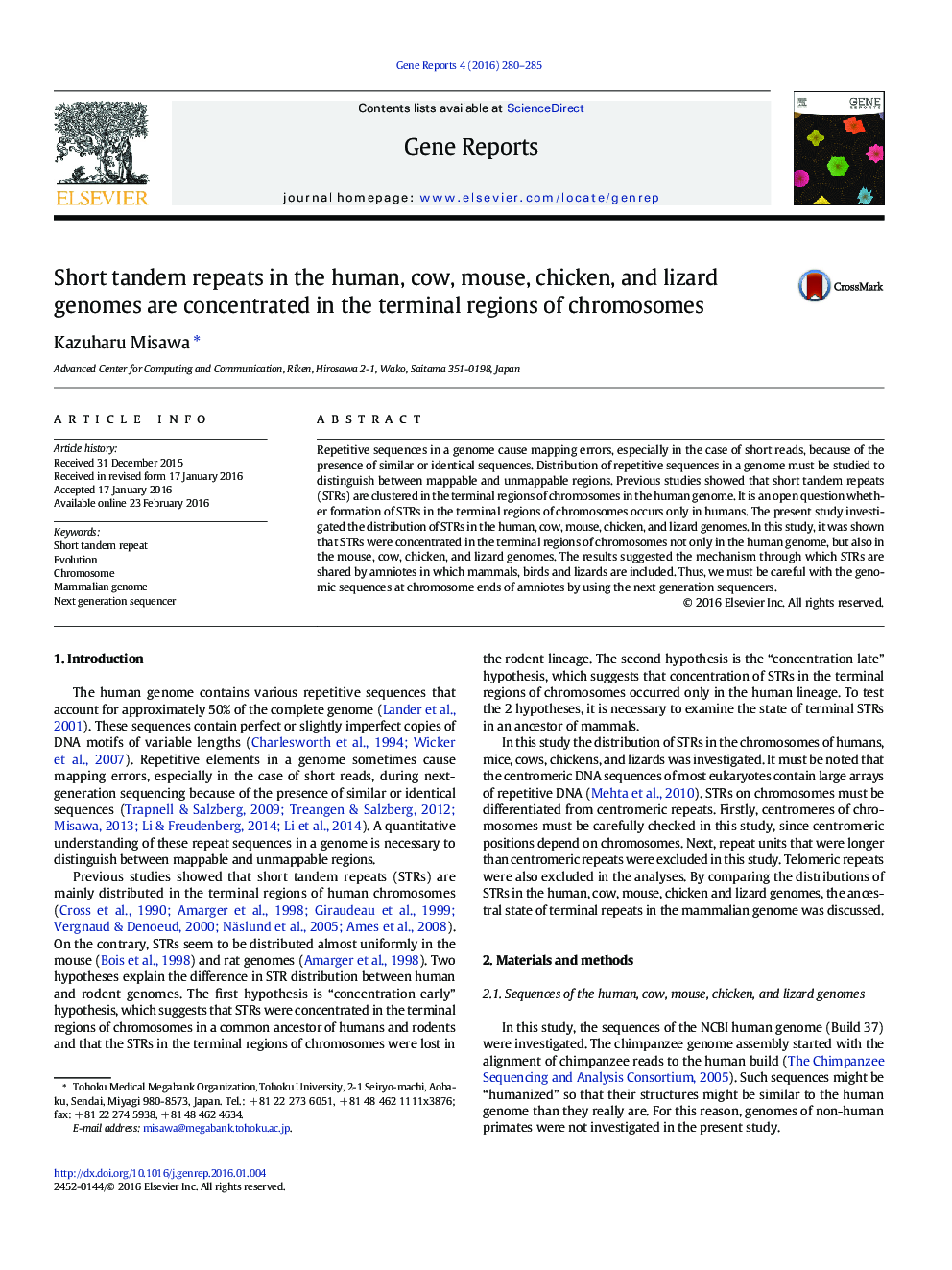| کد مقاله | کد نشریه | سال انتشار | مقاله انگلیسی | نسخه تمام متن |
|---|---|---|---|---|
| 2820515 | 1570080 | 2016 | 6 صفحه PDF | دانلود رایگان |
• Repetitive sequences in a genome cause mapping errors of short reads.
• Positions of repetitive sequences in chromosomes are of interest.
• Short tandem repeats of human, mouse, cow, chicken and lizard genomes were investigated.
• Short tandem repeats of these species cluster at terminal regions of chromosomes.
• The terminal concentration of minisatellites conserved more than 300 million years.
Repetitive sequences in a genome cause mapping errors, especially in the case of short reads, because of the presence of similar or identical sequences. Distribution of repetitive sequences in a genome must be studied to distinguish between mappable and unmappable regions. Previous studies showed that short tandem repeats (STRs) are clustered in the terminal regions of chromosomes in the human genome. It is an open question whether formation of STRs in the terminal regions of chromosomes occurs only in humans. The present study investigated the distribution of STRs in the human, cow, mouse, chicken, and lizard genomes. In this study, it was shown that STRs were concentrated in the terminal regions of chromosomes not only in the human genome, but also in the mouse, cow, chicken, and lizard genomes. The results suggested the mechanism through which STRs are shared by amniotes in which mammals, birds and lizards are included. Thus, we must be careful with the genomic sequences at chromosome ends of amniotes by using the next generation sequencers.
Journal: Gene Reports - Volume 4, September 2016, Pages 280–285
